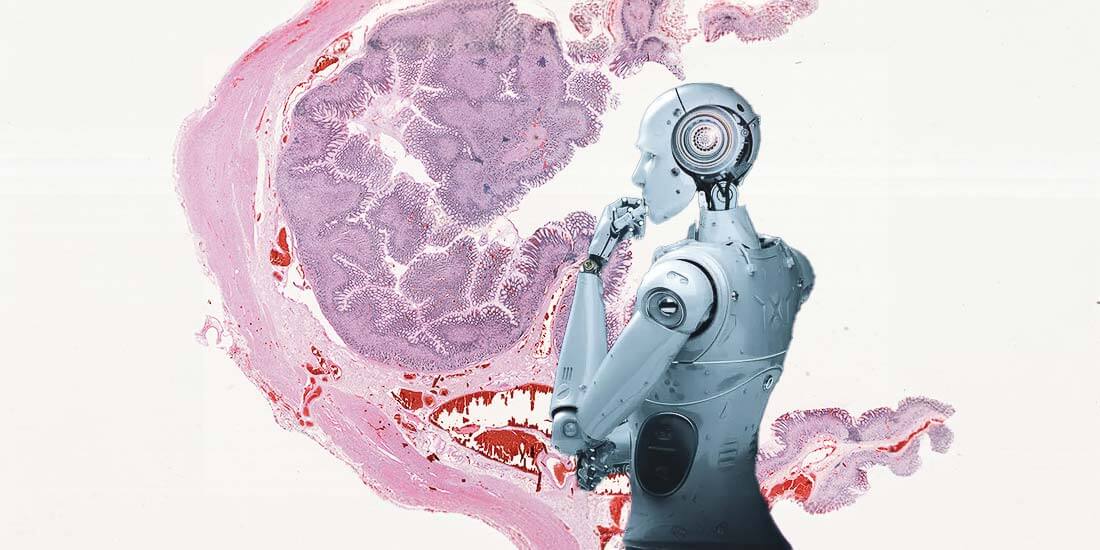Synopsis
Over the past two decades, artificial intelligence (AI) and machine learning (ML) have made a significant impact on the diagnosis of diseases. High-quality treatments require accurate, effective, and fast results; digitization greatly helps pathologists meet these requirements. At the heart of this modernization is AI and Ml, which offer endless possibilities. The best way to describe their potential is – “what was once unimaginable is now a reality”. So how can AI and machine learning revolutionize pathology diagnosis? Today, we take a closer look at the colossal opportunities that artificial intelligence and machine learning offer.
Use of Artificial Intelligence and Machine Learning in Pathology
Pathology, the study of disease and its effects on the human body, has always been an important component of medicine. Accurate diagnosis is the basis for effective treatment and plays an important role in disease surveillance and research. Traditionally, this has been done by observing tissue samples under an analog microscope. However, thanks to technological advancements and the integration of artificial intelligence (AI) and machine learning (ML) into virtual microscopy, the field of pathology is undergoing a major transformation. The integration of AI and ML is reshaping the diagnostic landscape and paving the way for a promising future in healthcare.
How Is AI and ML Making a Difference?
The integration of AI and machine learning has brought many benefits: AI and ML can easily and efficiently process massive amounts of data and analyze it more quickly and accurately. In this way, the challenges of traditional methods, such as extra time and human error, are overcome, improving the capabilities of the medical team and the laboratory.
Improved Accuracy
AI and ML algorithms can detect subtle patterns and abnormalities in tissue samples that are difficult to recognize with the human eye. They effortlessly identify specific biomarkers, cellular structures, and abnormalities associated with various diseases. By augmenting human expertise, AI reduces diagnostic errors and improves the accuracy of disease diagnosis.
Enhanced Efficiency
The speed of AI and ML in processing and analyzing digital slides is unparalleled. Routine tasks such as counting cells, classifying tumors, and identifying areas of interest can be automated, saving valuable time. This efficiency speeds up the diagnostic process and also reduces workload, allowing you to focus on more complex cases and patient care.
Virtual Collaboration
AI-powered virtual microscopes allow you to remotely collaborate on cases. This has significant effects on consultation and education. Experts in different locations can work together in real-time and share their expertise to improve diagnostic accuracy. Furthermore, it facilitates second opinions and multidisciplinary oncology conferences, leading to more comprehensive and informed treatment decisions.
Predictive Pathology
AI and ML can aid in diagnosis and also predict disease outcomes and treatment efficacy. By analyzing large sets of data, these technologies can identify predictive markers and provide insights into patient-specific treatment plans. This approach to personalized medicine has the potential to transform cancer treatment and guide clinicians toward the most effective treatment for individual patients.
Future of Pathology with AI and ML
The integration of AI and ML in day-to-day pathological workflow improves accuracy, efficiency, and accessibility. As these technologies continue to evolve, we can expect further amazing advances in this area.
AI-driven Molecular Analyses
Future innovations may include AI systems performing complex molecular analyses such as gene expression profiling and DNA sequencing directly from digital slides. This would provide you with a wealth of additional information to aid in diagnosis and treatment decisions.
Synergy with Emerging Technologies
Combining AI-based pathology with other emerging technologies, such as telemedicine and wearable devices, will create a ripple in healthcare. Patients will receive faster diagnosis, personalized treatment plans, and continuous monitoring, leading to better outcomes and improved quality of life.
Cutting-edge Technologies
The future of pathology diagnosis is here and ahead powered by AI and ML! Concrete proof of this is PreciPoint’s Clinical Image Analysis solutions, the perfect way of bringing innovative technology into the laboratory and work environment. The solutions offer advanced features that increase accuracy and precision.
Conclusion
Artificial intelligence (AI) and machine learning (ML) have completely changed pathology; AI has changed the entire medical industry by providing accuracy and speed. AI and ML, which have merged with the day-to-day processes of pathology and become an integral part of virtual microscopy, have made possible what was once unthinkable. Speed, detailed examination, accuracy, high efficiency, easy collaboration, lack of geographic limitations, impartiality, accessibility, and predictability have significantly reduced diagnostic and treatment error rates. AI has advanced the concept of personalized medicine and changed the way you work. The field is evolving with AI and ML integration, which offers many opportunities for you. PreciPoint’s Clinical Image Analysis solutions are the ideal amalgamation of AI and ML integration in your laboratory or workplace.











